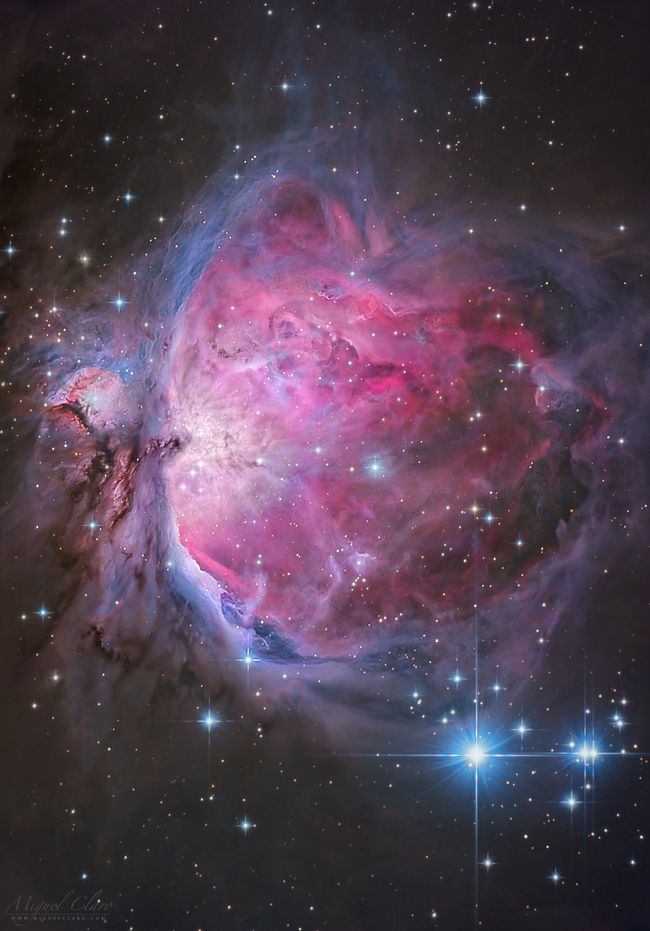Gorgeous Orion Nebula Glows in Stunning Red and Blue Light (Photo) [View all]
By Miguel Claro 18 hours ago Science & Astronomy
Deep-space nebula, or cosmic cotton candy?

(Image: © Miguel Claro)
Miguel Claro is a professional photographer, author and science communicator based in Lisbon, Portugal, who creates spectacular images of the night sky. As a European Southern Observatory photo ambassador, a member of The World At Night and the official astrophotographer of the Dark Sky Alqueva Reserve, he specializes in astronomical "Skyscapes" that connect Earth and the night sky. Join Miguel here as he takes us through his photograph "The Great Orion Nebula: A Colorful Show in Visible Light."
Captured in the visible light spectrum, this deep-space image paints a sharp and colorful picture of the great Orion Nebula.
Also known as Messier 42 (M42), the Orion Nebula spans about 24 light-years across and is part of the much larger Orion Molecular Cloud Complex. The nebula is situated in the Milky Way some 1,350 light-years away from Earth in the constellation of Orion, the hunter, and it can be seen with the naked eye south of Orion's belt.
Colorful clouds of cosmic dust and gas that make up the Orion Nebula fuel the formation of new stars. This stellar nursery is "the closest large star-forming region to Earth," which is why the nebula has "a relatively bright apparent magnitude of 4," according to NASA.
The brightest central part of the nebula is called the "Huygenian region" (named after the 17th-century astronomer Christiaan Huygens). To its left is a dark nebulosity nicknamed the "Fish's Mouth," which separates M43 — another smaller nebula adjacent to M42 on the left side of this image — from the brighter region of M42. Along the outside edges of the cloud formation, we can also find the so-called "wings" of Orion. Shining at the heart of the Orion Nebula is the Trapezium star cluster, named after the four bright stars it contains
More:
https://www.space.com/orion-nebula-visible-light-photo-miguel-claro.html
